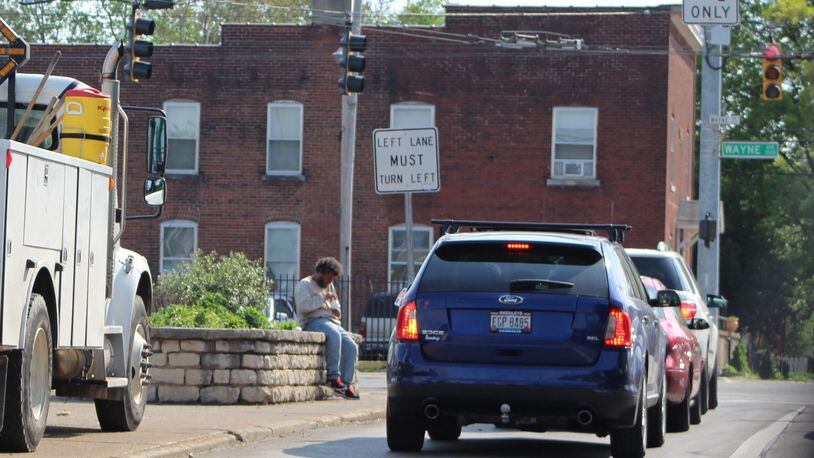But the legislation also is expected to force panhandlers to leave some of their favorite solicitation spots on medians along busy highway exits and high-traffic intersections.
RELATED: Where are panhandlers the biggest problem in Dayton? We have a map
Dayton has 51 sections of arterial roadways, which includes interstates, freeways, expressways and other principal roads.
Some examples of arterial roads include Interstate 75, U.S. 35, Ohio 4 east of I-75, Ludlow Street, Wayne Avenue, Patterson Boulevard and parts of Main Street.
Next week, the city commission is expected to introduce an ordinance to prohibit pedestrians from coming within three feet of any vehicle in operation on an arterial road (also called specified highway), unless the car or truck is parked or lawfully standing for loading or unloading.
The ordinance also would forbid pedestrians from being on a median, channelizing island or rotary traffic island on specified highways unless they are in the process of crossing.
People on the median who do not cross the highway after two opportunities would be in violation of the ordinance. Violations would be a fourth-degree misdemeanor.
RELATED: Dayton woman identified in fatal pedestrian strike
Of the 51 sections of arterial roadway within the municipal boundary, 41 have had at least one pedestrian strike since 2008, the city said.
About 69 percent of pedestrian strikes in the last decade took place on the city’s arterial roadways, officials said.
Since 2013, there have been 20 fatal pedestrian crashes in the city of Dayton.
“Not only our arterial roadways the most dangerous roadways in the city for pedestrians, they also in fact have a fairly good distribution, with nearly all of them being very dangerous,” said Troy Daniels, assistant city of Dayton prosecutor.
Highway medians are intended to separate opposite lanes of traffic while islands are intended to provide a refugee for pedestrians as they cross busy roads, officials said. They are not safe places for people to hang out, officials said.
RELATED: Why does it seem like there has been an increase in panhandlers?
The ordinance also prohibits drivers from slowing down or deviating from a traffic lane to approach a pedestrian who is hanging out on a median or island.
The city does not want pedestrians interacting with vehicles on the city’s most dangerous highways, officials said.
Dayton's ordinance is modeled after one in Madison, Wisc. The city passed an ordinance to crack down on beggars standing on the medians of busy streets.
The city also proposing making an addition to its ordinance about distribution in a right-of-way, which requires beggars asking for money to remain on the sidewalk or unpaved shoulders and not enter the right-of-way.
The proposed change prohibits people from engaging in distribution, or begging, with vehicles on specified highways, unless the vehicles are parked at the curb or shoulder.
Complaints about panhandling in Dayton increased in 2016 after courts ruled that begging is protected free speech and the city repealed its anti-panhandling regulations.
About the Author
